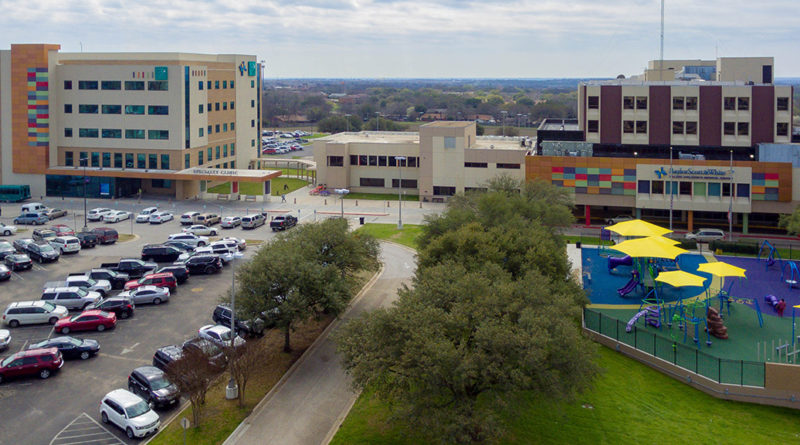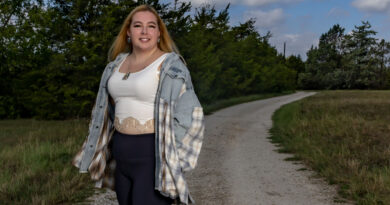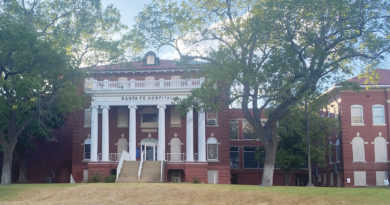Unique, kid-friendly facility
McLane Children’s Medical Center strives for innovation
By Stacy Moser
Photograph courtesy of Baylor Scott & White Health
Nobody wants to spend time with their children in a hospital setting, but when the need strikes, access to a top-notch pediatric medical center in your community can be, quite literally, a life saver. Since 2011, Baylor Scott & White McLane Children’s Medical Center has been that life saver for Bell County and communities far beyond its borders.
Patients and their families are known to travel from places as far away as Houston, San Antonio and Abilene to receive the high-quality care offered here. It’s very unusual for a city the size of Temple to be able to offer its residents a healthcare resource like this premiere hospital.
“The staff here is keenly aware of the value they offer this community,” says Dr. John Boyd, president and chief medical officer at McLane Children’s. “We all go to work every day knowing that we not only save children’s lives, but we have the opportunity to positively affect the lives of entire families all over Central Texas. It’s really a matter of pride for us.”
One of the first things patients see when they drive to the medical center campus is the colorful 10,000-square-foot playground out front. This isn’t your average playground, though—a multitude of swings, slides and shaded play equipment have been placed side by side with full-sized bells, chimes and drums. Donations from the Grimes family in honor of a local music teacher and donations raised from the staff themselves through their Employee Giving Campaign funded the “musical playground.” A University of Mary Hardin-Baylor music professor designed the musical instrument layout to feature this unique aspect of the playground. The play equipment is designed to accommodate children with any level of mobility, so even children in wheelchairs can enjoy some well-deserved playtime.
Visitors to the medical center will also note that the facility is undergoing construction, even though it’s only seven years old. Due to the rapid growth in patient demand for services at the medical center, the decision was made to add a $14 million, two-story expansion adjacent to the current emergency department. This will provide five additional ED rooms to meet current demand, like that experienced during 2017’s crushing flu epidemic, and it will double the size of physical and occupational therapy and create four private rooms in the special procedure unit. Construction will be completed by the end of summer 2019. The organization also invested in state-of-the-art infrastructure for the expansion with construction of a new central utility plant, completed in May.
“One area of our emergency department’s expertise is resuscitation,” says Dr. Dominic Lucia, medical director of the emergency department. “We strive to provide these children with the very best chance of survival here” (see his story on page 28).
The medical center is adding equipment to make treatment much less invasive for patients. For instance, vein finders that implement LED-infrared light reduce the guesswork involved in blood draws from tiny arms. A 3T MRI machine creates extremely in-depth studies of the brain and heart, and special goggles allow kids to watch movies during their MRI. A Flash CT Scanner creates images in seconds, so children don’t have to be sedated to have scans done. “They hardly know what happened, so it really reduces the fear factor,” Dr. Lucia explains.
Aside from advances that have been made in caring for pediatric trauma patients who are rushed to the medical center’s emergency department, McLane Children’s has also made strides in injury and death prevention for children.
In the United States, over 3,500 infants accidentally die each year due to unsafe sleep environments. Sudden Infant Death Syndrome (SIDS) claims the lives of around 2,500 infants a year in children one month to one year of age. The national Cribs for Kids organization certifies hospitals that prove their commitment to reducing sleep-related deaths in children.
McLane Children’s became the first hospital in Texas to earn a Gold Certification as a National Safe Sleep Champion, due to their implementation of a safe-sleep policy, including staff trained to teach parents how to keep their babies safe while they sleep.
“Through this program, we encourage ‘safe sleep,’” says Kayla Cehand, trauma and injury prevention coordinator for McLane Children’s. “This helps our community decrease the causes of accidental deaths.”
“Babies deserve our very best,” says Ellen Hansen, McLane Children’s chief nursing officer. “Our prevention team, in collaboration with the neonatal intensive care, pediatric intensive care and medical surgical units, has worked tirelessly to ensure McLane Children’s meets the highest standards of education for parents. We want them to know what to do to ensure that their babies sleep safely. Our goal is to prevent SIDS in our community.” Key guidelines to the program include teaching parents that babies should sleep on their backs on firm mattresses without blankets, toys or hats in the crib.
Another way the medical center keeps an eye out for the welfare of children in the community is through its “Stand Up Against Child Abuse” program. The medical center treated nearly 1,000 child abuse cases in 2017 and established this program to combat the problem. Dr. Boyd says that the medical center’s goal is “to help people with challenges find resources so we can decrease the number of children who suffer,” referring to children who experience abuse or neglect at home.
On the lighter side, McLane Children’s Medical Center’s pediatric patients have recently been introduced to a new type of caregiver—Lorenzo, the facility dog. This cute canine, a Golden Retriever/Labrador mix who is about to celebrate his third birthday, was awarded to two of the medical center’s child-life specialists, Leah Woodward and Ashley Blackmon. Woodward and Blackmon participated in extensive training through the Canine Companions for Independence facility-dog program in Irving, Texas, and are now Lorenzo’s handlers. They visit patients’ rooms with Lorenzo to provide emotional support—whether it’s to jump in a child’s bed to cuddle for a quick nap or to be available to pet during a scary procedure.
“Patients who are here for long periods of time really miss their pets at home,” Woodward says. “Seeing Lorenzo is so comforting to them.” The dog works full-time at the medical center and is much beloved by patients, parents and the staff (see their story on page 30).




